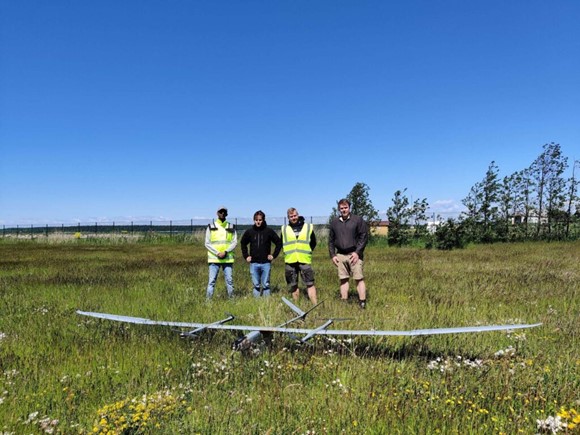The next wave of drone flights within the GOF 2.0 Integrated Urban Airspace very large demonstration (VLD) started in Helsinki, Finland, on 14 June and will continue in Austria and Estonia, ending in October 2022 in Poland.
According to a programme press release:
“During the trials, GOF 2.0 Integrated Urban Airspace VLD will use the expertise of 15 scientific and commercial partners from the drone and aviation industry to demonstrate the operational validity of serving unmanned aerial systems and manned operations safely, securely, and sustainably in a unified, dense urban airspace using existing air traffic management and U-space services and systems.”
According to Maria Tamm, GOF2.0 project coordinator from Estonian Air Navigation Services, the cross-border trial (Helsinki-Tallinn) will investigate how operation plans for transnational flights, that are submitted by both manned and unmanned aircraft operators, are approved or rejected separately for the segments in each country. “Next to that we need to get the know-how and information on how surveillance information is shared to ensure situation awareness for the systems and safety coordinators throughout all flights and how aircraft operators are served pre-, in- and post-flight by the demonstrated U-space services,” said Maria Tamm.
Programme managers say the key lessons of GOF 2.0 project will be an important enabler for the further development of the drone market and will deliver the technical components (services, software, competencies, practices) required to cost-efficiently operate autonomous and semi-autonomous drones beyond visual line of sight in integrated, airspace.
“The first wave of GOF 2.0 trials validated the functionality of the interconnectivity of all linked systems as-is and enabled collection of initial performance and operational data for various scenarios. In the second wave, the full functionality of the GOF 2.0 solution, including dynamic tactical U-space services and elements of surprise to the aircraft operators will be tested,” said Jonas Stjernberg, SVP and Partner at Robots.Expert. “As a result, we will stress-test the resilience and performance of the actors and systems to operate in an integrated, digital airspace. In addition, we will demonstrate how precision weather and ground-to-air connectivity can enable more complex operations in U-space.”
GOF 2.0 is managed by the SESAR 3 Joint Undertaking in an effort to deliver solutions for U-space, the European Commission’s initiative on the safe and secure integration of drones in European airspace.
This project has received funding from the SESAR 3 Joint Undertaking under the European Union’s Horizon 2020 research and innovation programme under grant agreement No 101017689.
For more information




